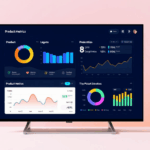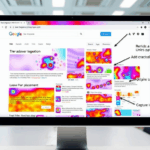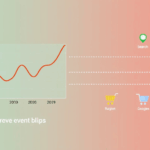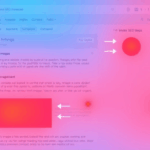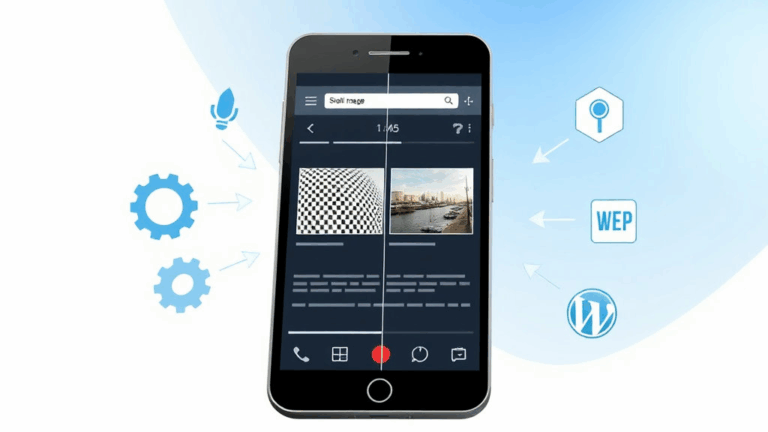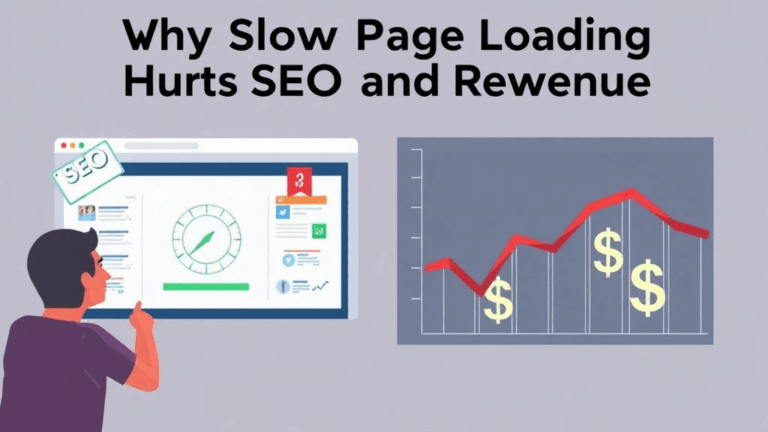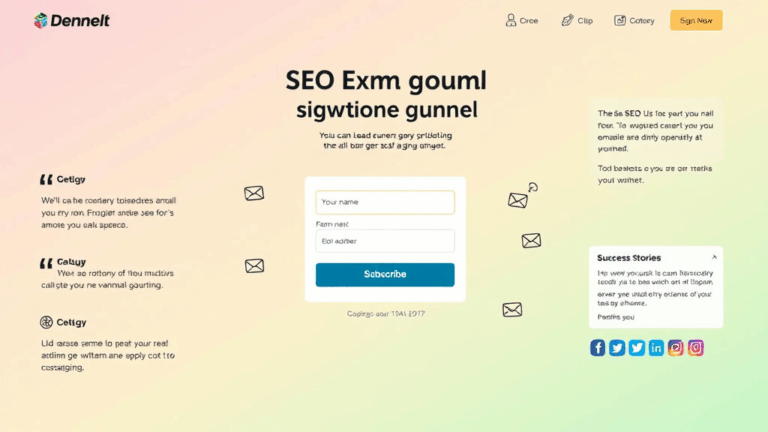Debugging Behavioral Signals That Quietly Kill Your Rankings
When Scroll Depth Becomes a Misleading Metric
Back in 2022, I was obsessed with scroll tracking as my primary user behavior signal. I piped the data into GA and based some dumb React conditional components on whether a user hit 75% of the page. One day I realized most of our traffic spike was from low-bandwidth users in Vietnam who accidentally scrolled to the bottom while trying to close cookie banners. So, yeah… scroll depth isn’t what you think it is.
The basic flaw here: scroll position gets reported regardless of actual content engagement. Log a scroll event after 5 seconds? Still worthless if the bulk of users rubber-band scrolled from top to bottom to skip a cookie notice.
What’s worse: platforms like Google Analytics 4 batch scroll events with engagement time, so combining the two in filters can mask problems. Think you’re seeing deep reads? You might just be logging folks idling with a tab open while making ramen. True story. In GA4 debug mode, I once saw scroll events get fired after the user clicked outbound and the session expired.
If you’re going to track scroll depth, combine it with inactivity timers, or better yet — visible interaction zones. I’ve had luck attaching event listeners to high-value sections (e.g., subscription form blocks) and only logging when they’re at least 50% visible for 5 seconds.
// Example: Using Intersection Observer to measure actual section views
const observer = new IntersectionObserver((entries) => {
entries.forEach(entry => {
if (entry.isIntersecting && entry.intersectionRatio >= 0.5) {
// e.g., sendEventToGA('aware_of_pricing_tier')
}
});
}, {
threshold: [0.5]
});
document.querySelectorAll('.track-zone').forEach(e => observer.observe(e));
Bounce Rate Is a Ghost from the Old Internet
We all still look at bounce rate like it means something. It doesn’t. Not the way most analytics tools calculate it. If a user reads an entire 2800-word guide and leaves, GA4 might still call that a bounce unless there’s some other triggering action. That’s not a disengaged user — that’s someone who found what they needed.
The actual platform behavior makes this worse. GA4 terminates sessions in unintuitive ways (e.g., tab close doesn’t always count), and unless you’ve set up interaction events the right way — including synthetic ones like scroll callbacks or idle-after-active markers — you’ll likely get false negatives.
Even worse, I’ve seen sites implement misfiring event handlers where onMouseMove was being logged as engagement. So bot traffic that hovered automatically? Registered as healthy, engaged humans.
If bounce rate still matters to you, you’re probably trying to tell a story to someone who’s never used Search Console.
Pogo-Sticking Is Real, But Google’s Definition Isn’t Public
This one’s slippery because Google won’t define it, but behavior patterns that look like pogo-sticking — user lands, clicks back immediately, selects next result — definitely trigger ranking reductions for that URL in context. It’s not always penalized, but trust me, it nudges you down when the pattern repeats.
I once did a side-by-side test with two product landing pages. Both ranked page one on a low-volume transactional keyword. The polished one with fast load and scan-friendly layout stayed steady. The bloated, modal-heavy one started slowly tanking in about 3 weeks. We never got a manual penalty, but Search Console showed a drop in queries/clicks even though it still “ranked” — just lower in auto-suggest or secondary surfaces.
What probably triggers this? A short session followed by a return to the same SERP and another click. You won’t catch this in GA. You pretty much have to map referral chain logic in server logs or use a session recording tool. I had to stitch this together by combining raw NGINX logs with time deltas and user agents. Absolutely not fun.
Undocumented: Session Time Reset on SPA Route Changes
For single-page apps, Google Analytics gets weird. Route changes via React Router or Vue Router trigger “page_view” events, but don’t reset the session the way they do on traditional navigation — unless you manually push certain event triggers. This skews all behavior metrics if you rely on time-on-page or session duration.
Here’s the bad logic: GA’s gtag script doesn’t naturally interpret route changes as fresh navigation unless you push gtag('event', 'page_view') along with a new page_location param. But even then, other heatmap-type trackers (looking at you, Hotjar) may not detect the DOM reset because component-level rerenders don’t replace the HTML root.
I hit this when debugging why so many users seemed to “leave” our funnel steps in GA while still converting later. Turns out, the soft URL changes weren’t triggering proper state transitions in our event tracking setup. Thousands of conversion flows got misclassified as abandoned because session-time anchors didn’t reset.
If it’s a React app, bind tracking back into history events:
import { useEffect } from 'react';
import { useLocation } from 'react-router-dom';
export default function useRouteAnalytics() {
const location = useLocation();
useEffect(() => {
window.gtag('event', 'page_view', {
page_location: window.location.href,
page_path: location.pathname,
send_to: 'G-XXXXXXX'
});
}, [location]);
}
Mouse Tracking Tools Don’t Catch Keyboard Navigators
This one’s more niche but absolutely real: if your site gets any traction from accessibility-first users — screen readers, full keyboard nav, no pointer devices — then most of those popular user behavior tools (LuckyOrange, Hotjar, CrazyEgg) completely fail to pick up their signals. Hover paths don’t exist in keyboard tabbing.
It’s a silent blind spot. I’ve watched this exact thing wreck CSAT analysis. We had a B2B app that skewed heavily government contractor — the kind where someone in procurement is using JAWS and tabbing cleanly to form fields. Our on-page widget never even triggered for them because it was based on hover dwell time.
- Use
onFocusandonKeyDownlisteners for tracking keyboard interactions - Don’t rely on
mouseenteralone — especially for onboarding tooltips - Keep elements focusable with proper
tabindexsettings - Screen readers sometimes trigger custom ARIA events — those can be wired
The frustrating part is that no one tells you how many users navigate this way unless your audit includes raw device and modality checks. Default GA4 configs won’t spot this either.
Time-on-Page Lies When Tabs Are Hidden
A session that lasts minutes might actually have a user who read maybe six lines before switching tabs. There’s a deep behavioral flaw in how GA4 tracks “engagement time” — it stops counting some measurements when the tab is backgrounded, but not all. Also: screen lock on mobile doesn’t necessarily end the session.
GA4 has this param called user_engagement but the way it triggers is maddeningly opaque. According to their docs (and what I’ve reverse-engineered in debug mode), it occasionally batches pings every 10 seconds, but only if the tab is in view and there’s “recent user interaction” — whatever that means this quarter.
I found sessions showing over two minutes engagement even when the network logs proved the tab was hidden document.visibilityState = 'hidden' for over 90% of the time. Use the Page Visibility API to create your own heartbeat instead.
Heartbeat-style workaround:
let tVisible = 0, lastPing = Date.now();
function handleVisibilityPing() {
const now = Date.now();
if (document.visibilityState === 'visible') {
tVisible += now - lastPing;
}
lastPing = now;
}
document.addEventListener('visibilitychange', handleVisibilityPing);
setInterval(handleVisibilityPing, 10000);
This kind of thing matters when you’re trying to figure out whether your content actually holds attention or users just left the tab open while doomscrolling Twitter.
Inspect Element Doesn’t Match Viewport on Mobile
I burned two hours one night trying to debug scroll behaviors using Chrome DevTools’ responsive simulation. It turns out the viewport metrics reported via window.innerHeight and friends don’t match real conditions on mobile Safari — especially inside iframes or if you’re simulating not the actual device.
There’s an off-by-40px bug on some iPhones where the reported height shifts mid-scroll due to auto-hidden UI. Your scroll logging script might think someone hasn’t hit bottom when in reality the footer has been exposed for seconds.
This led me to log ridiculous “partial view” events, completely screwing content visibility metrics. The fix isn’t perfect, but the workaround that stabilized it involved using document.documentElement.getBoundingClientRect() instead of the view height.
This one isn’t in any doc I could find. I figured it out by rigging visual traces and overlaying phantom divs to detect position at runtime. Felt like witchcraft.
CTR Drops Can Be Delayed by Crawlers, Not Humans
You change a title expecting a spike. Nothing happens. Then: three weeks later, traffic nosedives. Before screaming at Search Console, double-check how often actual click data gets refreshed and matched to display SERPs.
Per Google’s own admission on support.google.com/adsense, some search metrics run on batch processing cycles. That means CTR shifts won’t reflect until auto-crawlers sweep again and reconcile the click pattern with the new snippet/URL.
I tested this with three nearly identical article rewrites. One had an emoji in the title, one didn’t. All changes went live within minutes, but snippet previews in search results took up to 9 days to reflect. The longest delay was for the one with rich markup — which ironically got demoted due to improper implementation.
Point is: behavioral click data is sticky, and Google won’t always reward your change when you press save. Sometimes, the lag drags on just long enough to make you think the experiment failed. Or that your A-B test was invalid. It’s not. The sync is just busted.


